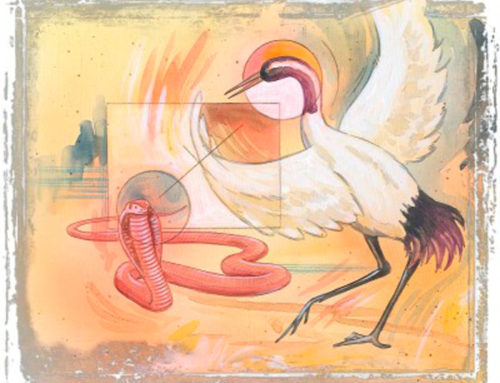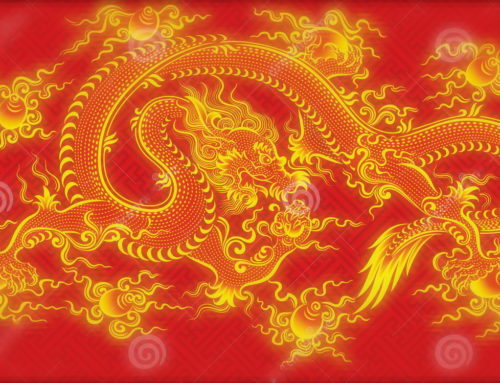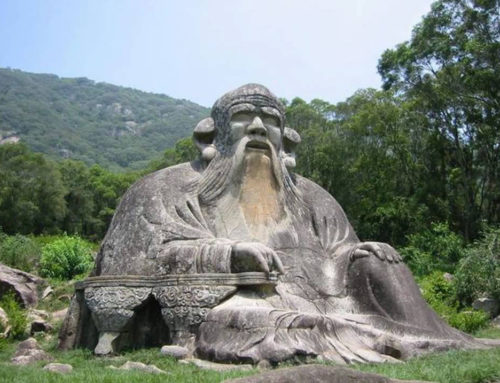In the many articles and news items which proliferate in the media about Tai Chi and Qigong and Chinese medicine, the word which crops up again and again is ‘qi’ (氣). Pronounced ‘chee’ and not to be confused with the word ‘chi’ in Tai Chi the concept of ‘qi’ pervades much of Chinese medicine and Chinese philosophical thought. However the Chinese character for ‘qi’ (氣) has no English word into which it can be translated. The character has 2 parts or radicals, which together convey the picture of vapour rising from a container of boiling rice; so it gives a sense of a vital substance which is an inherent part of something that nourishes and sustains life.
All things in the material world, living organisms included are said to depend on qi for their existence, but they are not qi themselves. So from this a picture emerges of something which eludes any attempt to measure or define it.
In Taosim, a philosophical tradition central to Chinese thinking, Qi is the life-force that animates the forms of the world. In Japan it is called “ki,” and in India, “prana” or “shakti.” The ancient Egyptians referred to it as “ka,” and the ancient Greeks as “pneuma.” For Native Americans it is the “Great Spirit” and for Christians, the “Holy Spirit.” In Africa it’s known as “ashe” and in Hawaii as “ha” or “mana.”
In China, the understanding of ‘qi’ is inherent in the very language. For instance: The literal translation of the Chinese character meaning “health” is “original qi.” The literal translation of the character for “vitality” is “high quality qi.” The literal translation of the character meaning “friendly” is “peaceful qi.”
In Tai Chi and Qigong as well as in Chinese health practice we think of two fundamental forms of ‘qi’ they are ‘yin-qi’ (feminim principal) and ‘yang-chi’ (masculine principle). Though there are many other forms of ‘qi’ as well such as the heaven and earth ‘qi’ or the ‘qi’ of trees, flowers, lakes and mountains. Chinese medicine describes many other forms of ‘qi’, depending on where it manifests in the body. For example each organ has its own type of ‘qi’ that is associated with it, and ‘qi’ is also said to flow through meridians or channels on which, at specific locations can be found the acupuncture points. It is these which are stimulated by the use of needles during acupuncture treatment.
Balanced and free-flowing ‘qi’ results in health; while stagnant or imbalanced ‘qi’ leads to disease. Tai Chi and Qigong both work to clear blockages and enable ‘qi’ to flow freely around the body, nourishing the internal organs and keeping us healthy.
So to conclude. Although ‘qi’ eludes our attempts to measure or define it, it manifests in all of us and everything we experience. Life, it is said in the Chinese medical classics, is a gathering of ‘qi’. A healthy (and happy) human being is a dynamic but harmonious mixture of all the aspects of ‘qi’ that make up who we are.
 Roy Hanney – is a university lecturer living and working in Hangzhou, Zhejiang Province, China. He practices taiji, qigong and yoga with a particular passion for Chen Style Taijiquan. In his spare time he makes films, authors websites and makes video art. He blogs about his encounters with Qigong and Daoist healing arts at his website: http://www.qigonginchina.com Roy Hanney – is a university lecturer living and working in Hangzhou, Zhejiang Province, China. He practices taiji, qigong and yoga with a particular passion for Chen Style Taijiquan. In his spare time he makes films, authors websites and makes video art. He blogs about his encounters with Qigong and Daoist healing arts at his website: http://www.qigonginchina.com |





Leave A Comment